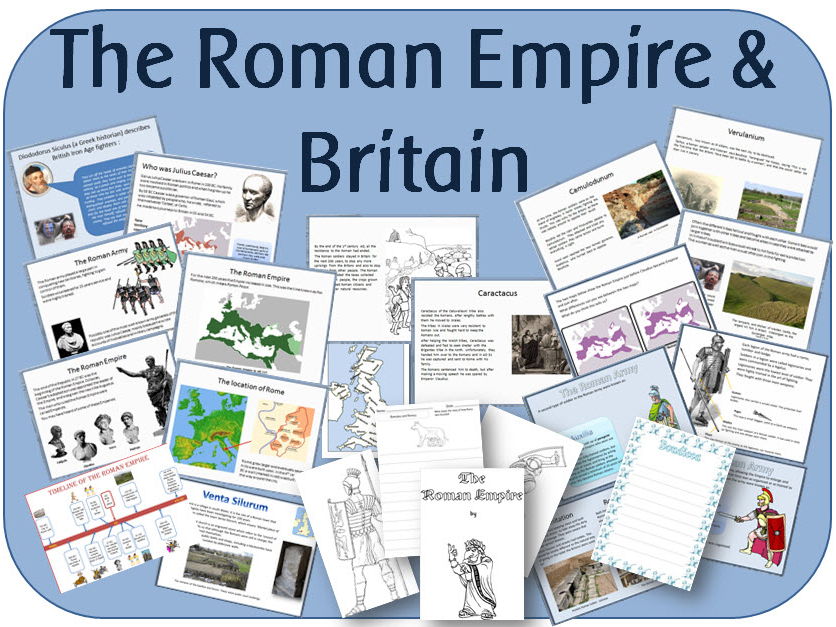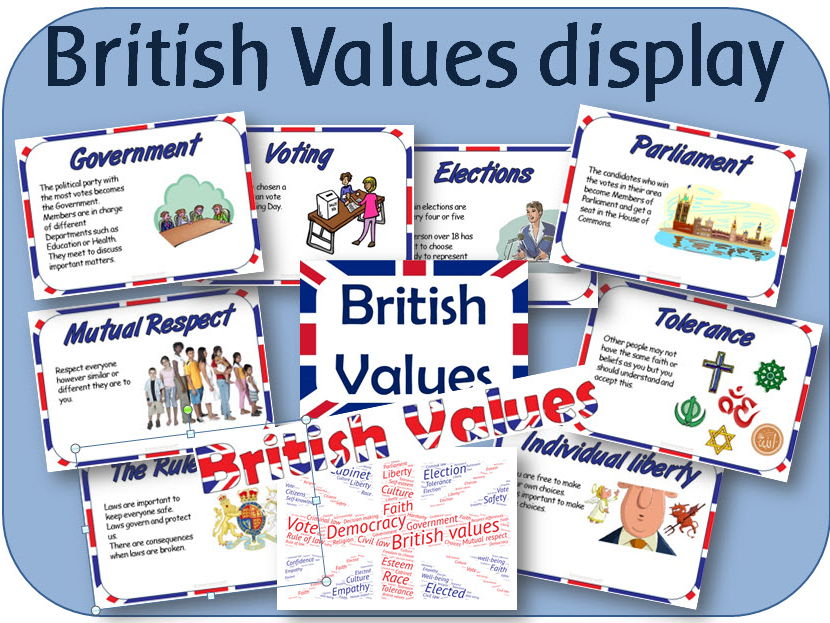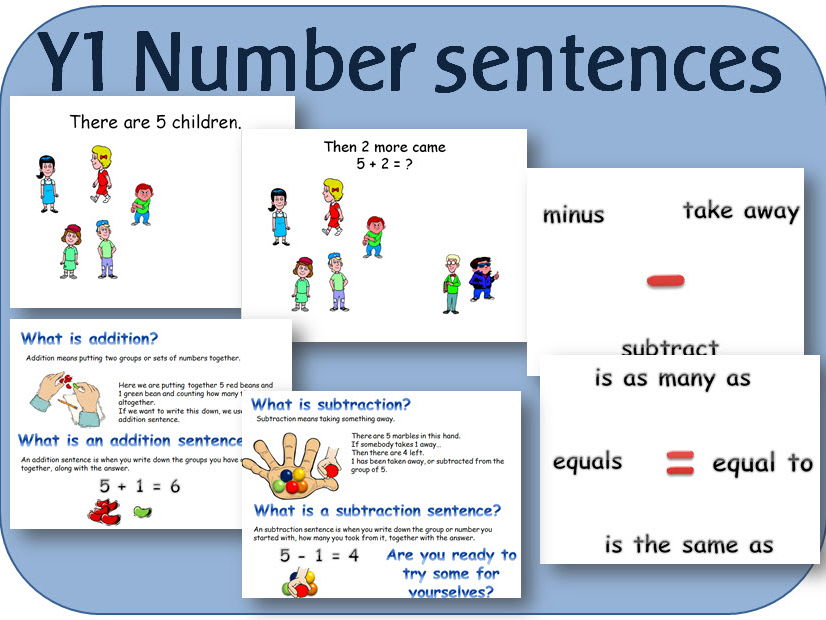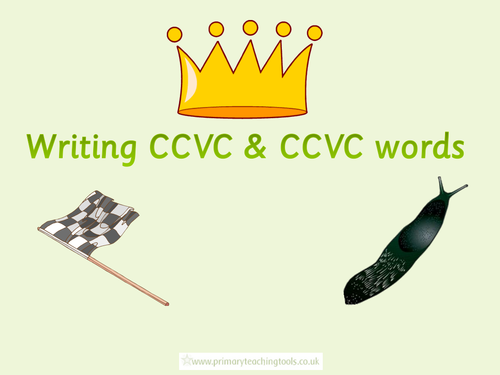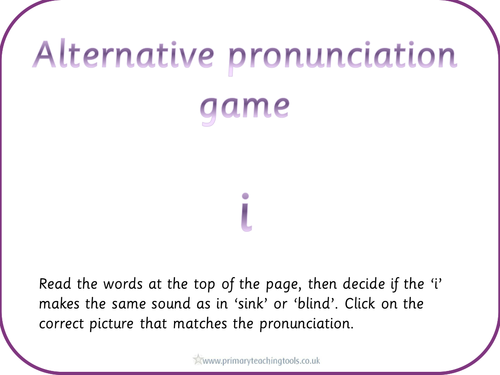
404Uploads
1066k+Views
681k+Downloads

Y1 Maths number and place value: 1 more and 1 less
A set of powerpoints to help children practise identifying one more or less than a given number.

Year 1 Maths Number: Identifying and representing numbers
A set of 15 powerpoints to help children identify and represent numbers with objects and pictures , use a numberline and use language such as equal to, more than etc.

Year 1 Maths Number: Addition and subtraction - introduction to number sentences
Four powerpoints to introduce the concept of number sentences in KS1. They help to teach how to read, write and interpret mathematical statements involving addition, subtraction and equals signs. Also included is a set of number cards plus add, subtract and equals symbols.

Year 1 Maths Number: One step addition problems
A set of powerpoints with different activities and problems to solve.
Addition as combining 2 sets: visual representation of joining two sets along with the number sentences
Addition can be done in any order: Demonstrates adding two numbers with counters by adding the small amount to the larger amount, and the larger amount to the smaller amount. Shows how this is the same when adding using numerals, and that it is easier to add the smaller number to the bigger number.
Addition strategies: shows different ways that addition can be done, including counting on, using a number line, using fingers or counters etc.
Buying 2 things at the toy shop: Real-life situation of using addition when buying 2 objects.
Counting biscuits and missing numbers: Shows how 10 biscuits can be shared using addition sentences. It then introduces the concept of missing numbers, hiding biscuits and numerals with a reveal button.
Counting dominoes: shows that addition can be done in any order.
Counting on at the pet shop: Practical counting on activity
Counting on from the biggest number: Demonstrates with objects on a number line how it is easier to count on from the biggest number
Counting on the bus: practical addition activities
Counting on the double decker bus: practical addition using the top and bottom deck
Counting on with animals: Simple counting activity with animals
Counting on with pencils: activity where the children can write down the number sentence to work out the answer
The toy shop: introduces the concept of most and least, more than etc. in a practical context.

Y1 Maths Geometry - position and direction
There are 4 powerpoints in this set:
Pivots: Shows examples of objects with pivots and how they work
Pivot worksheet (pdf): Objects with pivots
Objects that turn about a line: Shows examples of these kinds of objects.
Turns around a point - shows quarter and half turns on a clock.
Describing position: Shows different scenarios (Inside a house; a lounge; garage; bedroom, and classroom) and asks the children to describe the position of different objects using a range of vocabulary to describe position.

Letters and Sounds Phase 4: Reading and writing CVCC words
A variety of interactive and printable activities for reading and writing words ending with adjacent consonants.
Includes:
In the box games
Matching words and pictures games
Buried treasure game
Writing activities
Phoneme frames

Year 1 Maths Number: One step subtraction problems
A set of powerpoints with different problems that involve subtraction.
Finding the difference – Strategies: ways of finding the difference between two numbers
Sale at the toy shop: practical subtraction problems
Subtraction strategies: shows different ways that addition can be done, including counting back, using a number line, using fingers etc.
Taking away in the toy box: simple taking away activities
Taking away on the bus: subtraction problems using people getting off a bus.

Letters and Sounds Phase 4: Reading and writing words with adjacent consonants (CCCVCC etc)
A variety of interactive and printable activities for reading and writing words ending with adjacent consonants.
Includes:
In the box games
Matching words and pictures games
Buried treasure game
Writing activities
Phoneme frames

Letters and Sounds Phase 4: Reading and writing sentences
A variety of interactive and printable activities for reading and writing sentences containing words with adjacent consonants.
Includes:
Sentence substitution
Matching pictures and sentences
Writing and reading sentence games
Yes/No questions

Letters and Sounds Phase 4: Recognition and recall of Phase 2 and 3 graphemes
A set of resources to help recall the graphemes learnt in Phases 2 and 3.

Letters and Sounds Phase 4: Reading and writing CCV and CCVC words
A variety of interactive and printable activities for reading and writing words beginning with adjacent consonants.
Includes:
In the box games
Matching words and pictures games
Buried treasure game
Writing activities
Phoneme frames
Flashcards

Letters and Sounds Phase 3: Reading and writing tricky and decodable words
A set of IWB and printable resources to teach tricky and decodable words.

Letters and Sounds Phase 5 Phonic pack: graphemes ue aw wh Powerpoints
For each grapheme there are 2 powerpoint files:
READING AND WRITING POWERPOINT:
The new grapheme is introduced and followed by different words which contain the grapheme. The second part consists of words that can be hidden by the corresponding pictures so that the children can spell the word and check if they are correct.
WRITING SENTENCES POWERPOINT
Each sentence contains words with the newly learned grapheme, with an option to hide or show it.
Plus 2 Smartboard files with reading activities

Letters and Sounds Phase 5 Phonic pack: graphemes ph ew oe Powerpoints
For each grapheme there are 2 powerpoint files:
READING AND WRITING POWERPOINT:
The new grapheme is introduced and followed by different words which contain the grapheme. The second part consists of words that can be hidden by the corresponding pictures so that the children can spell the word and check if they are correct.
WRITING SENTENCES POWERPOINT
Each sentence contains words with the newly learned grapheme, with an option to hide or show it.
Plus 2 Smartboard files with reading activities

Letters and Sounds Phase 5 Phonic pack: graphemes ay ou and ie Powerpoints
For each grapheme there are 2 powerpoint files:
READING AND WRITING POWERPOINT:
The new grapheme is introduced and followed by different words which contain the grapheme. The second part consists of words that can be hidden by the corresponding pictures so that the children can spell the word and check if they are correct.
WRITING SENTENCES POWERPOINT
Each sentence contains words with the newly learned grapheme, with an option to hide or show it.
Plus 2 Smartboard files with reading activities

Letters and Sounds Phase 5 Phonic pack: graphemes ea oy ir Powerpoints
For each grapheme there are 2 powerpoint files:
READING AND WRITING POWERPOINT:
The new grapheme is introduced and followed by different words which contain the grapheme. The second part consists of words that can be hidden by the corresponding pictures so that the children can spell the word and check if they are correct.
WRITING SENTENCES POWERPOINT
Each sentence contains words with the newly learned grapheme, with an option to hide or show it.
Plus 2 Smartboard files with reading activities

Letters and Sounds Phase 5 Phonic pack: Split digraphs set of Powerpoints
For each grapheme there are 2 powerpoint files:
READING AND WRITING POWERPOINT:
The new grapheme is introduced and followed by different words which contain the grapheme. The second part consists of words that can be hidden by the corresponding pictures so that the children can spell the word and check if they are correct.
WRITING SENTENCES POWERPOINT
Each sentence contains words with the newly learned grapheme, with an option to hide or show it.
SENTENCES POWERPOINT
These activities show a missing word containing the split digraph for children to write, with prompts.
Plus 2 Smartboard files with reading activities

Letters and Sounds Phase 5 Phonic pack: Alternative pronunciations of i, o and c
For each grapheme there is:
An introductory powerpoint looking at each different sound the grapheme makes
A 'Writing sentences' powerpoint with sentences each containing words with the alternative pronunciations
for each different pronunciation, with sentences for the children to write, containing words with the alternative pronunciations
A game where the children have to choose the correct pronuncation of words

Letters and Sounds Phase 5 Phonic pack: Alternative pronunciations of g, u and ow
For each grapheme there is:
An introductory powerpoint looking at each different sound the grapheme makes
A 'Writing sentences' powerpoint with sentences each containing words with the alternative pronunciations
for each different pronunciation, with sentences for the children to write, containing words with the alternative pronunciations
A game where the children have to choose the correct pronuncation of words

Letters and Sounds Phase 5 Phonic pack: Alternative pronunciations of ie, ea and er
For each grapheme there is:
An introductory powerpoint looking at each different sound the grapheme makes
A 'Writing sentences' powerpoint with sentences each containing words with the alternative pronunciations
for each different pronunciation, with sentences for the children to write, containing words with the alternative pronunciations
A game where the children have to choose the correct pronuncation of words (except for 'er')

